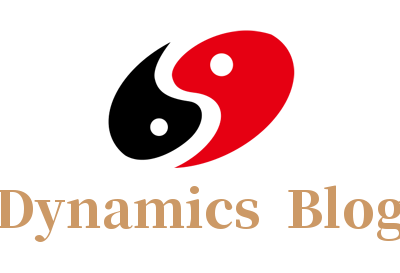Introduction
Sustainability is no longer an optional trend—it has become an essential principle in modern construction. For residential housing, one of the biggest challenges lies beneath the surface: unstable soil conditions that can lead to settlement, tilting, or even structural failure.
Traditionally, solving these problems meant heavy excavation, concrete underpinning, and high material consumption—all of which generate waste and a significant carbon footprint. Today, however, sustainable residential ground improvement offers a greener alternative, strengthening foundations while minimizing environmental impact.
At Hengxiang Hongy, we have pioneered eco-friendly methods for soil stabilization and foundation reinforcement, helping urban housing projects achieve both safety and sustainability.
Why Sustainability Matters in Ground Improvement
Urbanization continues at an unprecedented pace, with cities expanding both vertically and horizontally. This brings unique challenges:
-
Limited land availability forces developers to build on reclaimed or weak soils.
-
Carbon reduction goals require greener construction methods.
-
Community expectations push for minimal disruption to residents during improvements.
Sustainable ground improvement aligns with these demands by:
-
Reducing waste and emissions compared to traditional excavation-heavy methods.
-
Minimizing disturbance to local ecosystems and residential communities.
-
Extending building life to avoid frequent repairs and unnecessary resource use.
Eco-Friendly Methods in Residential Ground Improvement
1. Non-Destructive Controllable Soil Stabilization
-
How it works: Precision injection of grout or resin strengthens soil layers without excavation.
-
Eco benefits: Requires fewer materials, produces almost no construction waste, and allows homes to remain occupied.
-
Hengxiang Hongye advantage: Real-time monitoring ensures efficient material usage and prevents over-injection.
2. Micro-Lifting with Expanding Resins
-
How it works: Environmentally safe resins are injected into weak soil or beneath floors, expanding to fill voids and gently lifting settled slabs.
-
Eco benefits: Reduces the need for heavy cement or steel reinforcement, cutting carbon emissions.
-
Applications: Ideal for re-leveling residential floors without demolition.
3. Layered Reinforcement and Composite Foundations
-
How it works: Both shallow and deep soil layers are treated to create a composite foundation that distributes loads evenly.
-
Eco benefits: Enhances existing soils instead of replacing them, conserving natural resources.
-
Long-term impact: Extends structural life cycles, reducing the need for repeated interventions.
4. Permeation and Compaction Grouting
-
How it works: Low-pressure injection fills voids and densifies loose soils.
-
Eco benefits: Targeted treatment means less material waste and no large-scale excavation.
-
Community benefit: Limited disruption to neighborhoods and surrounding infrastructure.
5. Intelligent Monitoring Systems
-
How it works: IoT-enabled devices track settlement, pressure, and flow during treatment.
-
Eco benefits: Prevents overuse of materials and optimizes injection processes.
-
Result: Efficient, sustainable, and safer improvements.
Learn more about Hengxiang Hongye’s patented technologies: Settlement Reinforcement & Lifting Rectificatio.
Traditional Methods vs. Sustainable Ground Improvement
| Aspect | Traditional Foundation Repair | Sustainable Ground Improvement |
|---|---|---|
| Excavation | Heavy digging, high waste | Minimal or no excavation |
| Materials | Large volumes of concrete & steel | Targeted resins, optimized grout |
| Carbon Footprint | High due to cement & transport | Reduced emissions with efficient usage |
| Disruption | Often requires relocation of residents | Residents remain at home |
| Waste | Excavated soil & debris | Very little to none |
| Durability | Repairs structural elements | Strengthens both soil and foundation |
Case Applications in Sustainable Housing
Case 1: Apartment Complex on Weak Soil
-
Problem: Uneven settlement causing floor cracks.
-
Solution: Resin injection micro-lifting stabilized foundations without excavation.
-
Sustainability impact: Reduced material use by 40% compared to underpinning.
Case 2: High-Rise on Reclaimed Land
-
Problem: Variable soil strength causing differential settlement.
-
Solution: Layered reinforcement and intelligent monitoring ensured even load distribution.
-
Sustainability impact: Minimal disturbance to surrounding infrastructure and residents.
Case 3: Heritage Homes with Tilting Floors
-
Problem: Foundation instability threatening historical structures.
-
Solution: Non-destructive soil stabilization restored balance without altering the buildings.
-
Sustainability impact: Preserved cultural heritage with eco-friendly methods.
Long-Term Benefits for Homeowners
Choosing sustainable ground improvement provides not only environmental benefits but also tangible value for homeowners:
-
Reduced costs: Less material, faster work, and fewer repairs over time.
-
Stronger resale value: Eco-conscious buyers prefer homes with sustainable construction practices.
-
Peace of mind: Safe, long-lasting foundations without heavy disruption.
-
Community responsibility: Contributing to greener neighborhoods.
FAQs About Sustainable Ground Improvement
Q1: Are eco-friendly methods as effective as traditional ones?
Yes. Modern sustainable techniques achieve the same or greater stability while reducing waste and emissions.
Q2: Can my family stay at home during soil stabilization?
Absolutely. Most sustainable methods are non-invasive, allowing occupants to remain at home.
Q3: Do eco-friendly materials last as long?
Yes. Advanced resins and grouts are engineered for durability and can extend the service life of foundations for decades.
Q4: Is sustainable ground improvement more expensive?
Not necessarily. While initial costs may be comparable, long-term savings are achieved through reduced maintenance, material efficiency, and faster project timelines.
Q5: Can this be applied to old homes?
Yes. Sustainable methods are often ideal for heritage or aging homes since they minimize disturbance and preserve structural integrity.
Conclusion
Sustainable residential ground improvement is redefining how foundations are stabilized in modern housing. By using non-destructive technologies, eco-friendly materials, and intelligent monitoring systems, contractors can deliver safer, stronger, and greener homes.
With global experience and patented methods, Hengxiang Hongyeis leading this transformation, helping communities build responsibly without compromising safety.
For homeowners, developers, and city planners, sustainable ground improvement represents not just a construction method—but a commitment to a safer, eco-friendly future.
Explore Hengxiang Hongye’s solutions today: Settlement Reinforcement & Lifting Rectification Service.
en.hengxianghongye.com
Hengxiang Hongye Soil and Foundation Improvement Technology Co.,Ltd

